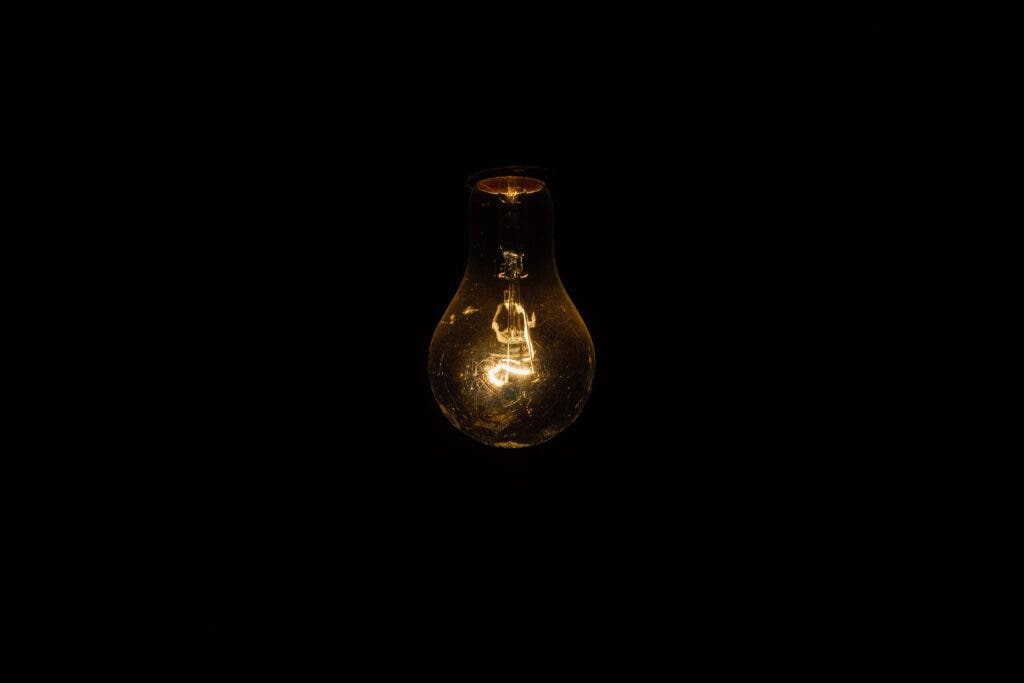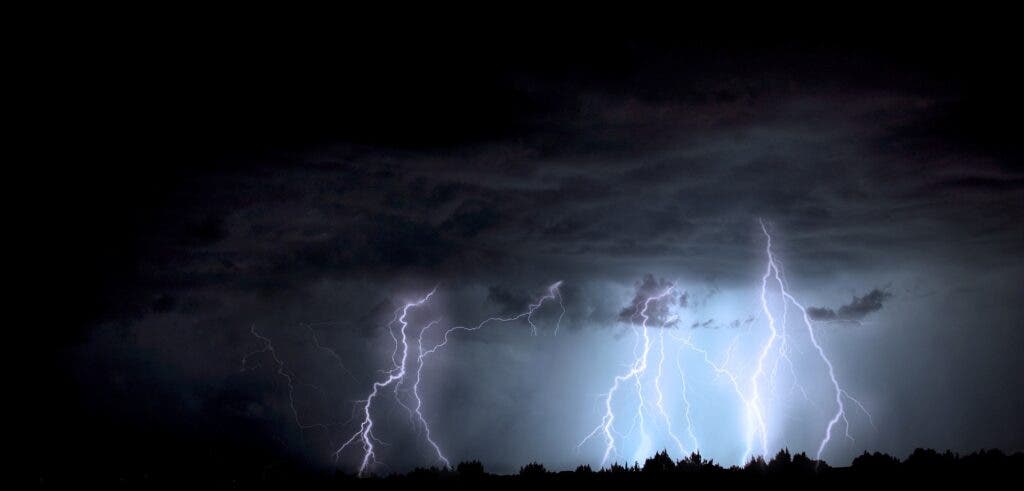Electricity — you couldn’t read ZME Science without it. Would life really be worth living like that? Probably not.

Luckily, we do have electricity running merrily through our cities and homes, our cars, our planes. We’ve had it for over two centuries now, thanks to the combined efforts of many brilliant minds. But like anything else discovered and not invented, electricity was already a thing in nature before people noticed and learned how to harness it.
Which raises a question — what are some examples of natural electricity?
Ancient currents
Humanity’s earliest knowledge of electricity undoubtedly came from lightning bolts. They represent huge discharges of electrical current, and they’re extremely visible, so we can say for sure that people have been aware of them ever since we first became aware of anything. For all its showiness, lightning was just too powerful and unpredictable for early humans to analyze and understand. They could see that a bolt of lightning would start fires (a theory goes that that’s how humans first learned to use fire), but any direct experiencing of its properties was likely to result in death — which tends to stifle scientific progress.
But there is another, more survivable source of natural electric current: animals. Fish, mostly. Electric eels, electric rays, and electric catfish have been known since antiquity, likely earlier. However, our first evidence of this comes from Antiquity.
Texts from ancient Egypt dating to around 5000 years ago showed that the electrical properties of some fish were already known at the time. They considered the electric catfish to be the protector of all other fish, calling it the “Thunderer of the Nile“. It’s particularly interesting to me to see that they did understand there was an association between thunder and electricity (or maybe it’s just a fluke of translation). Ancient Greek, Roman, and Arabic documents also make note of such fish.

Pliny the Elder wrote in Naturalis Historia about the numbing effects of shocks from electric catfish and electric rays, and that they could travel along conductive substances. Since people could feel the effect of these shocks but didn’t understand them, they had a lot of theories about what they were and what they could do. Touching electric fish was sometimes recommended against painful ailments (perhaps due to the numbness they caused) such as gout.
It’s possible that Pliny also had access to ancient Greek texts that discussed electrical animals. But they also studied the nature of static electricity — although it’s unlikely they understood that the two were related — which they believed was a form of magnetism. Some substances would need to be rubbed to become magnetic, they argued, while others (such as magnetite) were naturally magnetic. It does seem a bit of a stretch, looking back, since their theories were based on charging bits of amber by rubbing them, which would then attract light items such as feathers or strands of hair. But magnets don’t attract these same items, so it would be exceedingly easy to prove that it wasn’t the same phenomenon.
Still, there is evidence that at least some ancient peoples had a better grasp of electricity, how to generate it, and some of its uses. The Parthian Battery or Baghdad Battery is eerily reminiscent in structure to (you won’t believe this) a battery. It was made up of a clay pot, with copper and iron rods placed inside. It could have been used for electroplating, which involves using electrical current to plate an item with an atomic-thin layer of another metal (such as gold). That being said, it could also have been a fancy scroll holder, we just don’t know.
These are the historical accounts we have of electrical phenomena. Curiosity would drive people to them and towards their understanding, eventually culminating in the discovery of electricity.
Still, these are just the ones our ancestors could perceive. There are several other sources of naturally-occurring electricity, and some of them can get quite spicy.
Ball Lightning
Ball lightning sounds like a Dungeons and Dragons spell, but it’s a real thing. NASA even knows how to make some.
Reports of such lightning balls are patchy, but some of these reports are centuries old. We don’t really know what causes it, why, or how, but we know it exists. The best way to describe it is as spheres of plasma or lightning of various sizes and of much longer duration than a lightning bolt, up to minutes in some cases. Such spheres float or zip around, witness accounts vary, but they seem to be particularly associated with thunderstorms and other instances of electrical discharges.
Ball lightning seems to be capable of taking on a wide range of colors and sizes, but it tends to be comparable in brightness to a lamplight. Witnesses report being able to perceive it in daylight, and that its brightness stays more or less constant throughout its duration. It’s possible that ancient peoples saw these balls of lightning as well, and that they laid the foundation for stories of whisps, ghosts, or other shiny beings.
Contact with it is probably not advisable, which is a good rule of thumb for any kind of lightning although we don’t know its effects on contact.
Volcanic Lightning

With a name fit for a heavy metal band, volcanic lightning forms during volcanic eruptions. Friction between particles of ash in the hectic moments of an eruption generates powerful electrostatic charges in a process similar to that in a stormcloud. Eventually, all that energy has to go somewhere, so it discharges in the form of lightning.
We have very reliable evidence that ancient peoples knew of volcanic lightning. Pliny the Younger, the nephew of Pliny the Elder, describes the eruption of Mount Vesuvius in 79 AD as being “at intervals obscured by the transient blaze of lightning”.
Aurora Borealis
The northern lights are the product of interactions between the Earth’s magnetic field and charged particles incoming in the solar wind. In essence, these particles carry an electric charge which causes them to be repulsed by the magnetic field.
So technically, they form an electrical current. The light and colors are given off by gas particles in the atmosphere becoming ionized (energized) by this current. The color given off is a product of the frequency these particles vibrate. In the higher layers of the atmosphere, emissions tend to be low-frequency shades of red. These turn more towards green and blue at lower altitudes and ultraviolet at the lowest altitudes.
You might be surprised, however, to find out that the northern lights also make a sound: a hiss-like, cracking sound.
Galvanic corrosion
Batteries turn chemical energy stored in metal bars into an electrical current. That process is known as galvanic or bimetallic corrosion.

Galvanic corrosion involves the breakdown of a metal with a lower electric potential (the ‘less noble’ one) when it is in contact with a metal that has a high potential (‘more noble’) through an electrolyte solution. The greater the difference between these potentials, the more power is produced. The flow of ions tapers off as the anode corrodes, which is why batteries slowly stop producing power. However, corrosion at the cathode is inhibited, with incoming ions depositing on its surface.
The earliest official record of this process comes from the 17th century when the British Admiralty had to remove the lead plates used as sheathing on its ships to prevent iron elements from corroding. Later on, they tried installing copper plates instead (metal was used to coat the wooden bodies of ships to protect them against algae, parasites, and pests). They too had to be removed, as they were eating through the iron rivets used to fasten them to the hull.
Water, especially saltwater, is a very good electrolyte. In essence, tiny batteries formed at the contact between the plates and iron parts or rivets. This process is pretty much unavoidable wherever two metals come into contact and the air is humid. Modern equipment and infrastructure such as bridges sometimes use a sacrificial anode designed to be corroded and protect other metals, acting as a lightning rod for corrosion.
Another way to do it is to insulate these metals properly. The admiralty found that some of the iron rivets were in perfect condition. The copper plates, they discovered, were delivered to the shipyards in a waxy paper wrapping. Workers wouldn’t always bother to remove this before bolting the plates, and sometimes it caught on the rivet. This would insulate it from the copper, preventing oxidation.
In stars and planets
The Sun, being a huge fusion reactor, generates impressive magnetic and electric fields. One manifestation of an electrical current on its surface is the sunspot.
Our Earth’s upper surface is brimming with massive, low-intensity, and low-frequency telluric currents. They’re primarily generated by changes in the planet’s outer magnetic layer, which in turn is primarily influenced by the sun. Therefore, these currents tend to have a day-night variation and they’re relatively changeable. They also pass through oceans.
In animals
You quite literally could not read ZME Science without electricity. Not even printed out. Our brains need it to function.
Whenever one of your neurons wants to say something to its mates or send an instruction to your pinky, it has to generate an electric charge to do it. Computers, or Morse code, work using a very similar principle: 1 or 0, signal or no signal, current or no current. These can be compounded to form coherent messages.
Instead of sending them down a wire or processor, our brains do it with ions, charged particles, which bounce on nerve bundles to their destinations. The data our senses perceive is coded into electrical signals and sent to the brain, where it is processed using electrical signals. Any needed response is transmitted back using electricity.
The electromagnetic force is one of the four fundamental forces of the universe. They’re like its constitution, and all the other natural laws follow from their interactions. Electricity is one side of this force, the other being magnetism. We tend to think of them as things that you only find in a wall socket or in a lab, but they’re directly involved in everything.
But what fascinates me most is the thought that what I consider to be myself, my mind and memories and personalities, are shaped through electricity in a way. Hopefully, those fundamental laws won’t get overturned anytime soon, because I have a lot of data that I did not back up.


